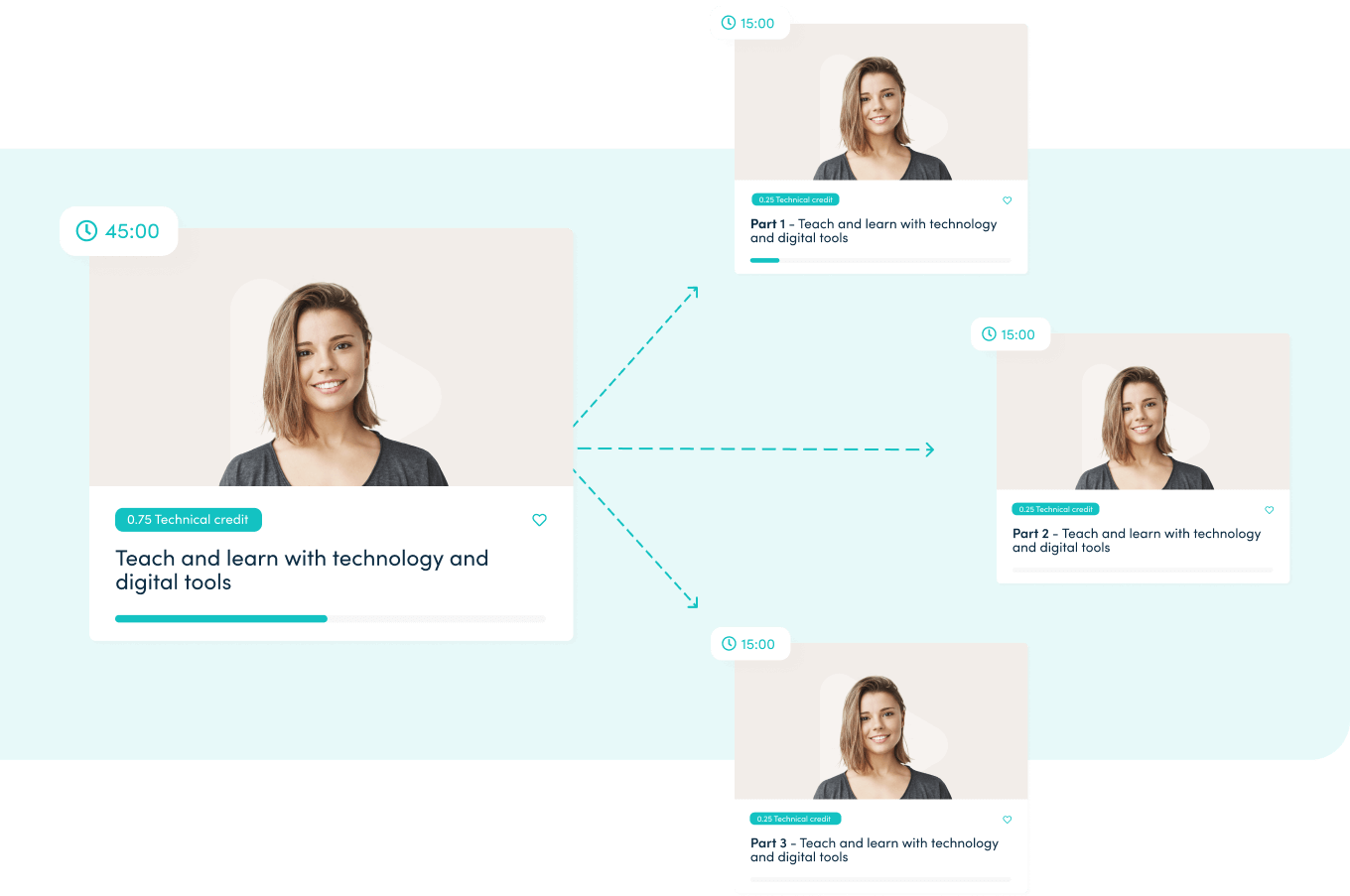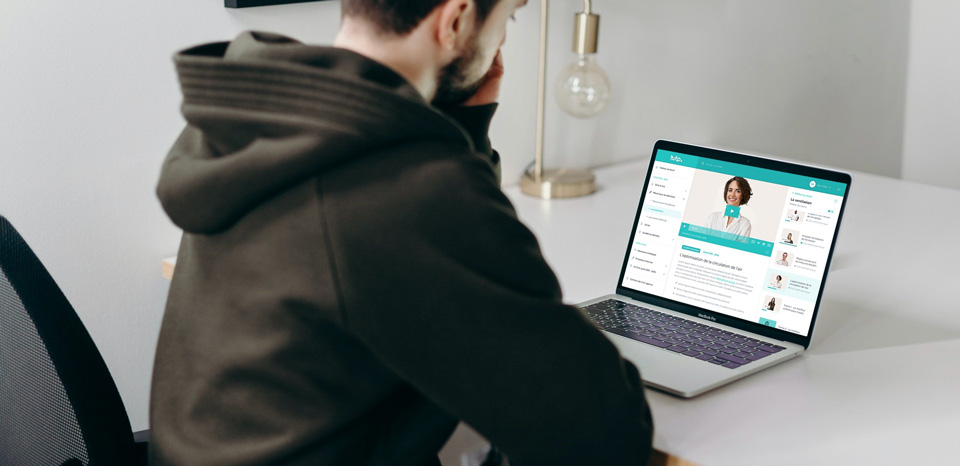What is Neurodiversity?
According to the Merriam-Webster dictionary, the term neurodiversity refers to “individual differences in brain functioning regarded as normal variations within the human population”.
We’re talking about people who have brains that work differently from the norm.
Regarding neurodiversity, we should aim to recognize atypical neurological functions and strive to respect neurodivergent people. It is important to remember that neurodiversity also affects a company’s performance because although it can lead to handicaps, these people’s great (often above-average) strengths generate benefits for companies that far outweigh the low costs of adaptive measures.
It means that every business leader should have a solid strategy for integrating neurodiversity into corporate training. If you don’t have one, it’s never too late to get started, and you are in the perfect place to get started.
What Profiles are Part of Neurodiversity?
The following neurological profiles concern nearly 20% of the population:
- Autism
- ADHD
- Giftedness
- DYS (dyslexia, dyscalculia, dyspraxia, etc.)
- Gilles de la Tourette syndrome
As Melissa St-Louis, professional coach and employer and brand strategist specializing in neurodiversity, mentioned during our interview, that it is important to understand that neurodiversity consists of two things: A fact and a movement.
- A movement, since we seek to recognize neurodivergent individuals’ values, strengths, and business needs. Indeed, it is not a medical term or a disease but rather a way of functioning that differs from the norm. Neurodiversity is more than just a diagnosis.
- A fact because all human beings have different brains, just like our skin color, eyes, hair texture, etc. Neurodiversity is a continuum.
How Important Is it to Consider Neurodiversity in a Training Strategy?
Some people have difficulty working in noisy surroundings, others under strong neon lights, and others struggle to read long written texts without losing focus. Neurodivergent employees are impacted in different ways, but many of the challenges they face can easily be overcome with a well-built instructional design.
Let’s say training is given, and 20% of employees fail to assimilate the material because the training is poorly designed; the result for the organization is decreased performance, wasted time and, therefore, money.
Poor instructional design = Poor assimilation = Low sense of confidence = Poorly done job = Waste of time = Waste of money
Why then adapt the training strategy? It pays more for everyone, and an inclusive work environment benefits a business. Organize your training the same way you organize your office equipment storage; Imagine that what you are looking for is there. In other words, even if you don’t know you have neurodivergent employees on your team, assume you do, just like you’re certain pens are in the office storage.
Where to Start?
If you are a manager and want to include neurodiversity in your organization, we advise you to create a new but more suitable structure while reusing existing content; the result will be much better. With the help of Melissa St-Louis, we have established for you the first steps to take to get there.
1. Provide Psychological Security
Make your employees feel that they can ask for whatever they need, whether it’s a quieter office, captioned videos, and more. Give them a safe space and show yourself open to difference. But be careful, it doesn’t happen in a day, you have to demonstrate your good intentions every day, little by little. Remember that actions have more impact than words.
2. Chat with your Employees
Chat individually with each of your employees to target their strengths and desires within the company. If they are interested in a particular task or position, see how it could meet one of your needs and how they could take training or coaching to develop their skills in this sector.
If you are genuinely committed to including neurodiversity in your potential development processes, hire a certified expert who could, among other things, perform a psychometric test on your employees, as well as offer personalized coaching. It would allow you to know the strengths and needs of each member of your team with clarity.
3. Collaborate with Experts
Collaborate with a specialist with experience in instructional design to ensure the development of your internal training according to the rules and obtain the best recommendations in terms of accessibility and according to the various possible handicap situations ( learning, sight and hearing).
4. People are Alike
Remember that everyone, neurodivergent or not, needs a healthy and comfortable environment to work in, whether their needs are related to back problems, tendonitis or dyslexia. It’s the same when it comes to training and learning; you have to know how to adapt.
Concretely How Does this Apply to Training?
Classic lecture-type training, where a trainer speaks throughout the video and students listen and take notes, is not the best format. It is estimated that only about 20% of the information is absorbed as it’s a very poorly suited technique for neurodivergent individuals. We recommend a 70/30 type training, i.e. 30% theory and 70% practice and co-development (interactive capsules, practical exercises, exchanges with peers, case studies, etc. ).
According to Melissa St-Louis, “the most common mistake is not having a clear and effective structure for training.” Here are some good practices on which to base your training strategy.
Simplify Training to Basics
Reducing training videos to essentials to keep the audience’s attention and ensure better retention is an excellent way to start. The rest of the material can be integrated into your exercises, interactive capsules or exchanges between peers. You can also create an inclusive and exciting journey by attaching documents to the video.
We also recommend that you provide employees with all the necessary work tools to reduce stress and learning difficulties. At the end of the training, hand out comprehensive and easy-to-access checklists, lecture notes or summaries to promote autonomy in applying new concepts. Training software, such as Tuto, also integrates this functionality into the platform on top of storing videos.
It is difficult for some people to take notes while watching a video, especially for people with dyslexia. Providing them at the end is a great way to take the stress out of missing information and ensure notes are correctly taken.
The training should be used to develop reflexes and skills and not to cram with information.
Limit Cognitive Overload
There are three channels of information retention: Eyes, ears, and kinesthetic activities. To ensure that your training is adapted to your audience, avoid cognitive overload at all costs. Make sure that only one channel is stimulated at a time.
In Other Words :
- If you are presenting a video, do not show a PowerPoint presentation at the same time that communicates the same information. Instead, opt for a visual that supports the material. For example, short keywords synchronized with the audio or an additional graphic element, but never bullet points or continuous text, especially if it differs from the words that are said (conflicting visual and auditory channels);
- Offer closed captioning for those with hearing difficulties, but make it optional so as not to overload those who hear well;
- Provide the tools and notes at the end, so your audience can focus only on the video, without having to think about taking notes (announce this at the start of the training to avoid unnecessary stress).
- In order to keep the focus on the essentials, avoid adding background music or decorative images that have no educational value.
State Clear Goals
Many people, especially those gifted or autistic, need to see logic in their learning; they must understand why they are taught such a thing. By presenting a game plan before training begins, you ensure that they do not drop out of their learning journey, as they will have benchmarks against their training and understand its relevance.
Then set clear learning goals. It allows a correlation between the material studied and the assessment made at the end. It is also a great way to establish a guideline to guide you in designing and follow-up.
Avoid using the verb “understand” in your goals at all costs, as it is a very subjective word and does not mean anything in particular. Several taxonomies exist to define effective goals, the best-known one being Bloom’s.
Break up the Content
Break up your clips into short segments so your employees can watch as many as they want and stop when they are no longer focused. Short videos of 10 to 15 minutes are ideal for this.

Also, structure the content by starting with the more general topics and slowly moving towards the more specific and concrete ones. Imagine a funnel or an inverted pyramid.
Another way to motivate your team is to make learning fun. Hand out achievement badges, collect points, earn freebies, reach goals, and more.
Managing Remote Working with Training
Here are some ideas for employees working from home and who have more difficulty joining together for the co-development part:
- Mix synchronous and asynchronous segments (some videos to watch at leisure, others with a fixed date and time)
- Build small groups to facilitate regrouping
- Use communication channels like Slack, Google Drive, Messenger groups, etc.
What you Must Remember
First, neurodiversity has been around forever. About 20% of the population is neurodivergent, which is 1 in 5 people. So it is virtually inevitable, from a statistical point of view, that there is at least one neurodivergent person in every SME.
Neurodiversity is a reality that affects all businesses in Quebec. It must be taken more into account during training to reduce disability situations and benefit from the full potential of its employees. The tips provided in this document are good practices to put in place. Still, we invite you to contact an expert in the field to optimize your strategy and offer personalized coaching to your managers to achieve a better level of inclusion in your organization.
We reserve the last word to thank Melissa St-Louis for her time and dedication to the cause of neurodiversity, as she has provided us with almost all of the information set out in this article. In addition, the 6th episode of his Les Neurodivertissants podcast will be broadcast on August 4, 2021, and will focus on the issue of adapting training.
To find them, go to anchor.fm/lesneurodivertissantes
To reach Melissa, visit www.kandea.ca or her LinkedIn page
Sources :
https://www.merriam-webster.com/dictionary/neurodiversity
Melissa St-Louis








